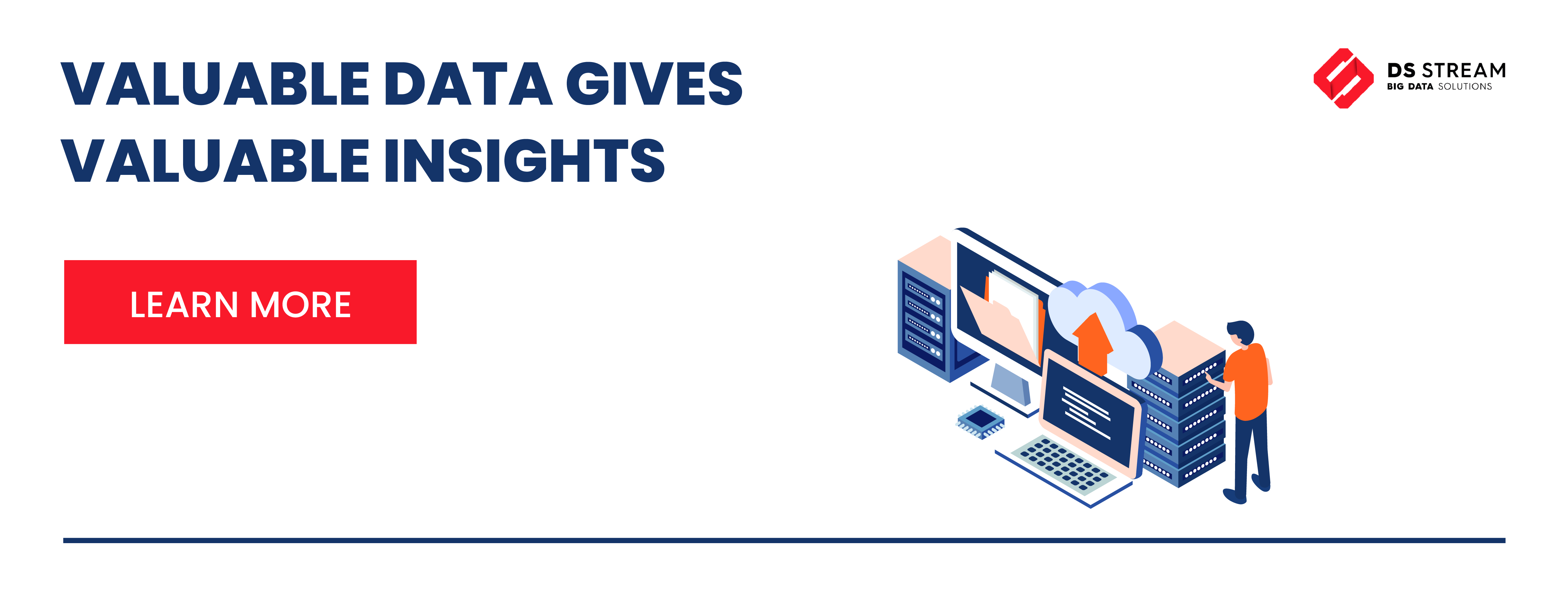
-
22 January 2021
- Big Data
All companies collect data, which must be stored somehow. Those organizations can then make data-driven decisions and get useful, business insights that can help increase company profit.
Data-driven decisions are key to your business success. Data modeling is not as easy as it sounds though. First, you need to understand the structure of your business. There are a lot of techniques you can use to ensure successful data modeling. If you need help finding the best solution for your company visit our Data Engineering Consultancy services
What is data modeling?
Data technology is getting more and more popular nowadays, but most of your competitors are still not investing in it. Why not? The power of data is proven. The biggest companies benefit from big data and data analytics. If the most successful entrepreneurs are using techniques such as data modeling, why shouldn’t you?
Technically, data modeling is a process in which the main goal is to define and analyze data requirements in order to support company processes using the IT systems chosen by the organization. In most cases, we use databases to store data structurally in a specific format. The whole process is quite complex. Nowadays data modeling is a necessity for many organizations, as it makes it possible to make data-driven, correct decisions and achieve business goals.
Types of data models
Data models represent collected data, the relationships between them and the way they are stored in the database. Each data type has its specific purpose. There are three main types of data models:
- Conceptual data model – this is created in order to define business concepts and rules for databases. The three basic elements of the conceptual data model are an entity (an actual thing that exists in the real world), an attribute (a feature of the entity) and a relationship (defined connections between entities).
- Logical data model – the goal of this model is to define how the system should be implemented. This model provides a technical map of rules and data structures. In this data model, we will find a definition of the structure of data elements as well as information about relationships between them.
- Physical Data model – this represents how the database system will actually be implemented.
There are many data modeling methods:
- Hierarchical model – this uses a tree-like format of data structure. Relationships between database elements are defined in a parent-child structure. This is now rarely used because accessing data in hierarchical database is rather time-consuming and requires knowledge about the used database management system (not all support the hierarchical queries).
- Network model – this was created to become a successor of the hierarchical model. It works similarly, but solves the problems typical for its predecessor. This model makes it possible to create complex relations between records, as each element can be linked with many other parent elements.
- Relational model – this was also developed as an alternative to the hierarchical model. The data can be stored in the form of tables as in hierarchical model, but it describes relationships between stored data, and its semantic. It guarantees a clear overview of the data and makes work easier.
- Entity-relationship model – this model shows relationships between entities in a graphical format. An entity can be a piece of data, an object, a concept – basically anything.
- Object-oriented model – this kind of database operates on a collection of objects.
Data modeling and database design
Data modeling is crucial when it comes to designing your databases. Creating the right data model is the first step in designing a database. There is always some kind of connection between the data items contained in the database. These relations are expressed by the data model. As a result of the data modeling process, the database structure is formally represented. You should choose your data model carefully and be sure that it suits all your requirements. Data should be represented in the chosen model from the beginning of the design phase.
Why are data modeling techniques important for your company?
Do you wonder why it is important to project ideas with data modeling techniques? Using the right databases, which will give you a clear representation of data, lets you analyze data more easily and quickly. Data modeling provides a quick overview of data, which developers can use in many applications.
Data modeling minimizes the risk of data redundancy by clearly and understandably representing collected data. How can data modeling be used to improve data quality and produce useful and reliable insights for your company? Many businesses depend on data modeling, so it is necessary for them to learn and adopt effective data modeling techniques for better results.
Are they any disadvantages of data modeling?
Successful implementing any new technology requires knowledge and experience. If you’d like to see how your company can benefit from data modeling, it will be best, you ask for expert support to be sure that all will be set properly. What kind of problems can you face while using data models?
- If your specialists lack experience on the matter, handling data models can do them no good. Mistakes can lead to data duplication and performance issues. Additionally, you need experts with specific skills to work with big data sets.
- Analysis takes a lot of time especially for large data sets.
- Making any changes to a poorly designed data model usually requires a lot of work.
Data models can improve the effectiveness of your company, but you have to consider risks carefully and choose the most appropriate approach in order to succeed.
What are the benefits of data modeling for your business?
Data modeling has plenty of advantages. Nowadays, enterprises have to analyze Big Data all the time! What can you gain from data modeling?
Predictive data modeling
Just having a lot of data won’t help your company grow if you don’t know how to use it. The proper data model is necessary for data mining. This gives you the power to spot patterns and create predictions, so your business can meet challenges and know how to benefit from many opportunities.
Improved data quality
Thanks to data modeling techniques, your data can be clear, trustworthy and easy to analyze. You can use the modeled data in any processes you need to perform. Having already been checked during modeling, you don’t need to verify data before using it. This makes it faster to produce business insights. With your modeled data, your company can become more competitive against other businesses in your industry and reduce the costs of database maintenance and data monitoring.
Reduced time-to-market
Data modeling enables better management of any kind of data. This can help you reduce the time needed for product development if your business uses data for product development. How is that possible? After modeling, your data will already be available in the required form and there will be no need for any further transformation.
Scalability
Well-designed databases can be scaled fast. Thanks to data modeling, your data operations will support your business as it grows. The choice of the right data model depends on your business needs. There are many modeling methods you can use to improve your business.
Better system performance
A simple data model means a simple database design. A properly constructed database will perform better – in short, it will run fast and without any problems. The concepts in the data model have to be concise to ensure optimal performance. It is also important to translate the model into the database correctly. Creating a good database that will work efficiently requires knowledge and experience, so we suggest you consult with our experts if you need advanced Big Data solutions.
Improved communication between technical staff and stakeholders
Understanding complex datasets is not easy. Fortunately, data modeling can provide you with documentation that makes it possible to explain even highly abstract matters and improve communication between technical specialists and business stakeholders.
Conclusion: improving your data models increases your company’s profit!
Data modeling can help your company in many ways. Thanks to it, you can use better designed databases, resulting in easier and faster data collection and processing. Companies analyze data to make the best financial decisions, create marketing campaigns or craft any other kind of strategy.
Businesses meet many challenges every day. Data models will help you quickly get answers to even very difficult business questions. Speed up decision-making processes with the best technologies. Better data management will increase your productivity, customer satisfaction and profit.
Don’t hesitate to contact our experienced consultants if you need powerful Big Data solutions for your company.
Visit our blog for more in-depth Data Engineering articles:




